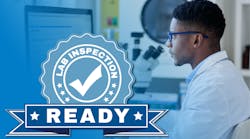Updating a laboratory information management system (LIMS), also known as a laboratory information system (LIS), is a major endeavor for any medical diagnostics lab, from small independents to those in institutional settings. The LIMS is a vital component interconnecting all operations. To make an informed choice, review your key business drivers and how the LIMS could better contribute toward reaching your business goals.1
A primary benefit of updating your LIMS is the ability to automate more elements of the laboratory workflow, from the preanalytical phase to revenue management.2 For example, automation can minimize staff handling of test samples and the manual input of data by utilizing barcode specimen tracking and archiving, while substantially reducing human error and improving efficiency. Conduct a thorough workflow assessment to identify manual procedures and tasks that could be automated, especially any rate-limiting steps that create bottlenecks, and flag repetitive work and data collection that could be eliminated.1
When a decision is made to replace a LIMS, there are important factors to consider in making the switch.
1. Clarify requirements and analyze your workflows
Do you need to speed up accessioning, or see faster results turnaround? Choose a software architecture based on your test menu specifications that also offers maximum flexibility and functionality for future growth.
2. Consult stakeholders
Gather feedback on recurring bottlenecks or missing functions that, if addressed, would significantly improve system performance. In addition to speaking with laboratory managers, bench scientists, and IT staff, ask these questions and look to past performance:
- Do hospitals, physician practices, schools, corporate clients, or patients themselves voice concerns about test processing or results?
- Are delayed reports, misplaced samples, or lack of data causing major problems?
- Are patient results being reported as soon as possible?
3. Add automation whenever possible
Automating report generation and distribution with the LIMS delivers test results faster to physicians and their patients, freeing laboratorians to focus on higher-value clinical tasks. When planning your upgrade, ensure that the LIMS platform you choose communicates seamlessly between the lab, doctor’s office, and patients and eliminates paper documents as much as possible.
4. Assess how supply inventory is managed
If ordering and tracking reagents and other consumables is being conducted manually, the process can be automated and simplified. There are systems that can electronically track and replenish lab supplies via e-commerce reordering.3 This can help mitigate supply chain issues that many labs have experienced during the pandemic.
5. Consider integrating lab instrumentation with the LIMS
Directly integrating facility instrumentation for real-time data importing and analysis saves time and improves data quality.
6. Determine compliance and data security needs
Laboratories must meet ever-increasing requirements for compliance with data security and privacy standards such as HIPAA, HITRUST and NIST. What quality and traceability features are essential? Do you need to acquire enterprise-level certification to handle testing for large organizations? How can you protect sensitive patient data and plan for a possible breach?
Outsourcing regulatory compliance and data security functions to a LIMS supplier can reduce demands on internal IT resources. A cloud-based LIMS, for example, provides automatic backup and disaster recovery to increase redundancy and minimize downtime.2 Prior to converting to a new LIMS, conduct a risk assessment to ensure that patient safety is not adversely affected by process changes.4
7. Integrate LIMS data with billing and accounting to improve insurance reimbursements
Lack of interoperability between the LIMS and revenue cycle management software can result in significant loss of income if charges go unbilled. Labs must also collect information required by payers, including test requisitions, lab reports, and patient medical notes, to receive reimbursement.5 A LIMS that incorporates front-end integration with client electronic health records can automate data collection and processing for billing to reduce staff burden and capture additional revenue.
An all-in-one LIMS platform with a single user interface allows labs to manage all of their information in one place, eliminating time spent overseeing multiple setups and vendors. Tailored to your specific requirements, the all-in-one platform can streamline laboratory operations, boost productivity, and help address staffing challenges in many areas.
8. Cloud-based vs. on-premise data storage
The traditional on-premise LIMS is giving way to cloud-based models that can handle increased demand for sharing data across and between organizations. On-premise systems are difficult to integrate and scale and often time-consuming and costly to install and manage.
By contrast, a cloud-based LIMS offers the advantages of quick deployment, no upfront capital investment, low internal maintenance costs, and greater flexibility and scalability. Large files can be transferred much faster and made easily accessible to multiple devices or locations within the lab or shared with outside collaborators. Cloud software that connects small independent users in a lab-to-lab network allows them to team up, manage overflow work, take on new customers, and operate as national businesses, regardless of location. Smaller labs can compete with larger diagnostics companies by leveraging the network’s expanded capacity and versatility.
9. Cost and pricing options
Buying a long-term license may be favored by larger companies that have sufficient IT resources to maintain the system. However, pay-as-you-go subscription licenses are more cost effective for smaller laboratories. They can count on ongoing support from their LIMS provider for software updates, troubleshooting, and other service needs without dedicating in-house staff to those purposes.
Find a supportive vendor partner
When evaluating companies to install and support a new LIMS, it is important to choose not only a platform with the necessary functionality, but a software provider who will act as a trusted IT partner throughout the process. Does the vendor listen closely to your needs and concerns, take time to observe your day-to-day operations, and propose a system that meets your requirements and budget? Can they accommodate change requests as your lab operations evolve? Do they offer customization, real-time repairs, upgrades, and patches? Is customer service available 24 hours a day to answer questions or handle problems?
Selecting a customer-focused, responsive LIMS supplier ensures that you can resolve any issues quickly during installation and startup. In addition, they can be counted on for ongoing service and support.
Plan for conversion
Decommissioning an existing LIMS and implementing a new one will disrupt laboratory business and must be carefully planned. How long is the changeover expected to take? What staff training will the vendor provide, and what is the anticipated learning curve? Laboratory staff must be able to easily identify and report any functionality problems during pre-launch testing and after the LIMS goes live.4
LIMS platforms that can be rapidly deployed — in a few days to a week — will minimize operational disruption. Your vendor partner should collaborate closely on both initial planning and addressing any performance concerns post go-live.
Document the change process
Make sure that you receive complete system documentation from your LIMS provider, create an internal record of the conversion process, and debrief with laboratorians and other stakeholders after launching the new platform. This information will be valuable for future system updates.
Upgrading to a new LIMS with greater digital connectivity can dramatically improve a lab’s efficiency and productivity. With careful planning and partnering with a knowledgeable software supplier, medical laboratories can streamline their operations to handle much higher test volumes, minimize human errors, deliver faster results, and grow their business with the increased automation an advanced system can offer.
References
- DePalma A. To LIMS or Not to LIMS? Lab Manager. May 5, 2015. Accessed August 16, 2022. https://www.labmanager.com/product-focus/to-lims-or-not-to-lims-6268.
- Keys to upgrading an LIS. Medical Laboratory Observer. November 23, 2021. Accessed August 16, 2022. https://www.mlo-online.com/information-technology/lis/article/21247101/keys-to-upgrading-an-lis.
- Dorsett D. The Power of the Integrated Lab. Lab Manager. February 23, 2022. Accessed August 17, 2022. https://www.labmanager.com/business-management/the-power-of-the-integrated-lab-27608.
- Peterson K. How One Laboratory Navigated a Successful LIS Conversion. Clinical Laboratory News. March 1, 2022. Accessed August 17, 2022. https://www.aacc.org/cln/articles/2022/march/how-one-laboratory-navigated-a-successful-lis-conversion.
- Nadeau K. Best practices for lab management in 2022. Medical Laboratory Observer. April 20, 2022. Accessed August 18, 2022. https://www.mlo-online.com/management/article/21264293/best-practices-for-lab-management-in-2022.





